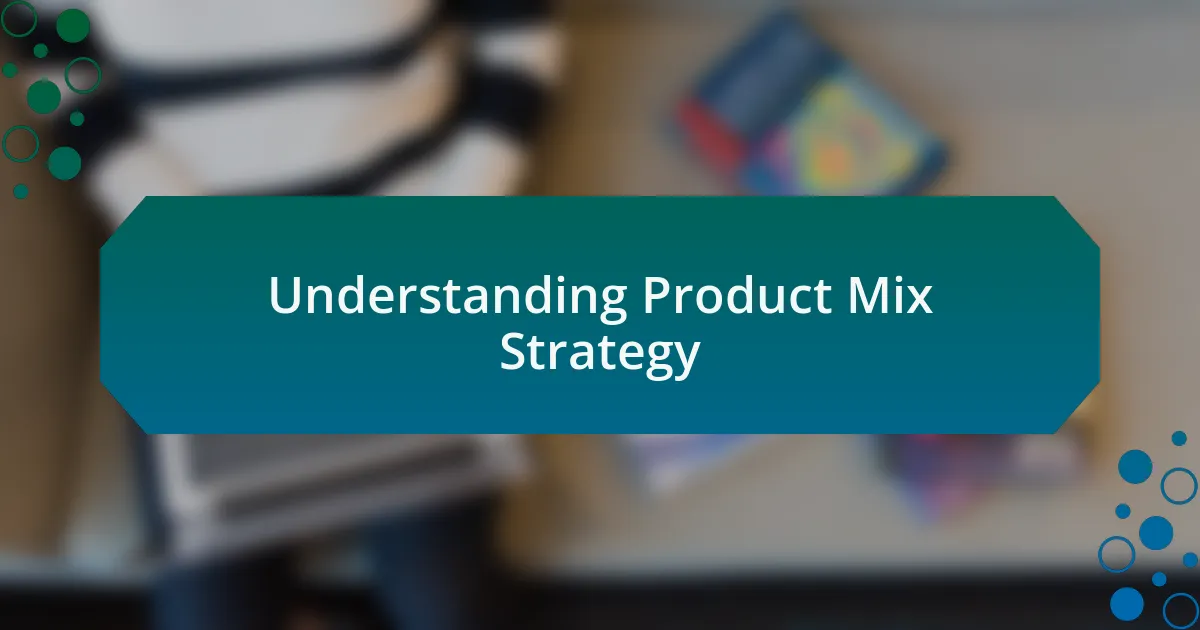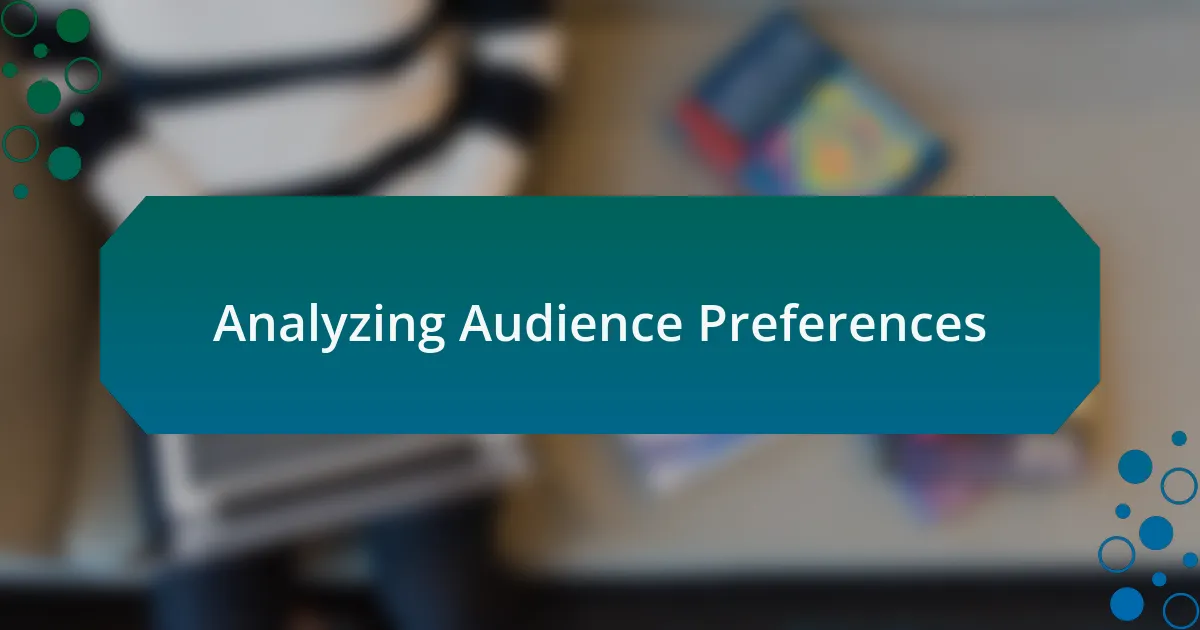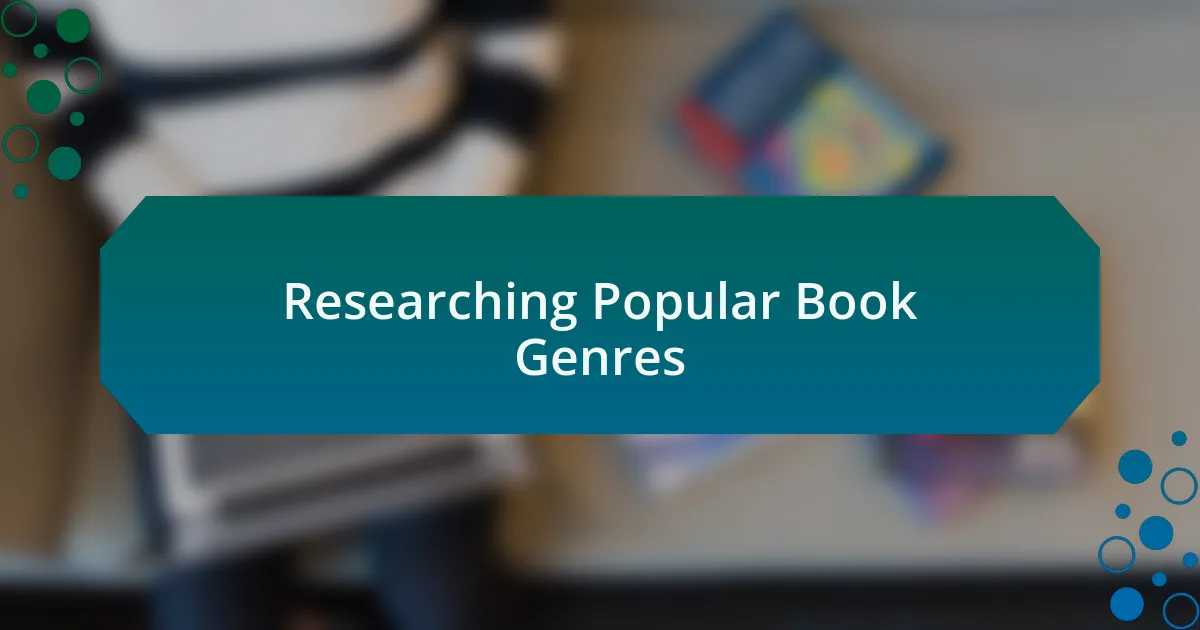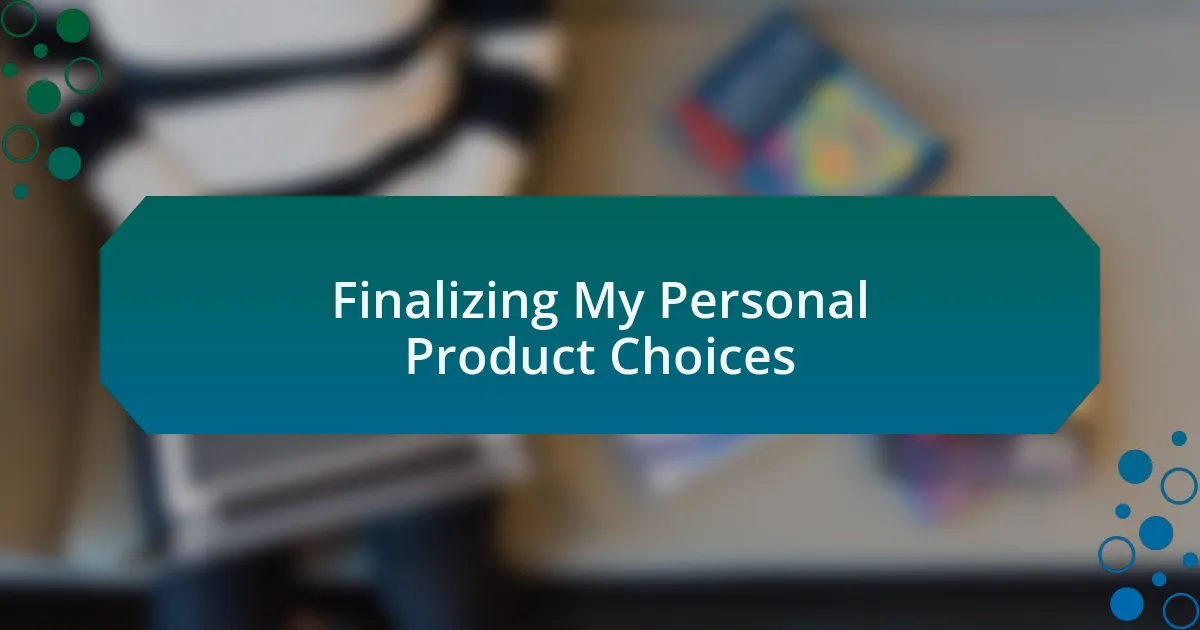Key takeaways:
- A well-rounded product mix appeals to diverse reader preferences, including genres, formats, and price points.
- Active engagement with the audience through feedback and polls can lead to better-curated selections that resonate with community interests.
- Building strong vendor partnerships enhances the festival experience and fosters trust, leading to creative collaborations.
- Diversity in offerings is crucial, requiring an emphasis on representation and inclusion of emerging authors and underrepresented voices.

Understanding Product Mix Strategy
When I think about product mix strategy, I can’t help but recall my first experience curating a selection for a local book festival. I realized that a well-balanced mix includes various genres, formats, and price points to attract different types of readers. How often do we gravitate toward something unexpected? That’s the beauty of diversity in offerings.
A crucial aspect is understanding your audience’s preferences. I remember speaking with festival attendees who shared their reading habits, which opened my eyes to the importance of aligning my choices with their interests. It’s not just about having popular titles but also niche books that resonate with passionate communities.
Moreover, I’ve learned that flexibility is key in shaping a product mix. In one instance, I adjusted my selection based on feedback after a few initial sales—introducing local authors and trending topics significantly boosted engagement. Have you ever noticed how quickly trends change in reading communities? Adapting your strategy can be the difference between a good selection and a memorable one.

Analyzing Audience Preferences
Analyzing audience preferences requires a deep dive into the unique tastes and interests of festival-goers. I remember a particular year when I set up a small booth and noticed a group of young adults gravitating toward graphic novels. Their enthusiasm sparked an idea: why not expand our offerings to include more visual storytelling? This direct observation reminded me of how listening can lead to exciting additions to our product mix.
I’ve also found that leveraging social media insights can be incredibly revealing. One year, I ran a quick poll on Instagram that showcased different genres we were considering. The overwhelming response for fantasy surprised me, leading to a curated section dedicated to local fantasy authors. Isn’t it fascinating how a simple question can unveil such strong community preferences?
Understanding audience backgrounds also plays a pivotal role. At one festival, I noticed a significant number of attendees were educators and parents looking for diverse children’s literature. Recognizing this trend enabled me to feature not just popular titles but also books that deal with cultures, languages, and social issues. Have you ever thought about how your audience’s demographic influences your selections? It’s enlightening to realize how these nuances can shape a more targeted and engaging product mix.

Researching Popular Book Genres
Researching popular book genres often starts with immersing myself in current trends. I remember attending a publishing conference where discussions revolved around the growing interest in psychological thrillers. Witnessing firsthand how authors and publishers alike were captivated by the genre’s rise made me eager to bring in more titles that would resonate with thriller enthusiasts at the festival. Can you think of a genre that once seemed niche but suddenly exploded in popularity?
I also make it a habit to visit local bookstores and note which genres have dedicated displays. One afternoon, I stumbled upon an entire table featuring memoirs that chronicled extraordinary life stories. It struck me just how hungry people are for authentic narratives, showing me that these deeply personal accounts can create meaningful connections in a festival setting. Isn’t it intriguing how a simple display can transform our understanding of audience interests?
Online platforms also play a crucial role in genre research. I often find myself browsing bestseller lists and noting the genres that dominate the charts. Last year, I was surprised to see a surge in interest for graphic medicine—comic books that deal with health issues. This finding led me to collaborate with local authors who were creating compelling narratives on mental health through illustrations. Have you ever considered how data-driven insights could enhance your genre offerings?

Evaluating Vendor Partnerships
Building strong vendor partnerships is essential for a successful book festival. My experience has taught me the importance of aligning with vendors who not only offer quality books but also share our commitment to community engagement. I recall a time when I partnered with a local independent bookstore; their enthusiasm for local authors created a genuine buzz at the festival, making the event feel more like a celebration of our shared literary culture.
In evaluating potential vendors, I always consider their reputation and connection to the genres we’re showcasing. A few years ago, I chose a vendor primarily based on their selection of diverse titles. As I watched festival-goers eagerly share their finds with friends, I realized that the vendor’s passion for curation made all the difference in creating an inspiring environment. Have you ever noticed how a vendor’s enthusiasm can elevate the entire experience?
Trust and communication are paramount in vendor relationships. I make it a point to have open discussions about expectations and goals. Once, during planning, a vendor suggested an interactive reading session that turned out to be a highlight of the festival. This kind of collaboration not only strengthens partnerships but also enriches the festival experience for everyone involved. Have you found that intentional conversations with vendors can lead to the most creative ideas?

Curating a Diverse Selection
When curating a diverse selection for a book festival, I tend to step outside my comfort zone and seek titles that might not traditionally be front and center. I remember a particular year when we introduced a section dedicated to translated works. This choice not only broadened our linguistic horizons but also sparked conversations among attendees about the cultural narratives that were often overlooked. Have you ever discovered a hidden gem that changed your perspective?
In my experience, diversity goes beyond genre—it’s about offering representation and inclusivity. One festival, I made a deliberate effort to feature emerging authors from underrepresented backgrounds. The excitement in the crowd was palpable as attendees connected with stories reflecting their own experiences, prompting many to share their personal journeys. Isn’t it powerful how literature can create a sense of belonging?
To ensure a rich tapestry of offerings, I actively seek input from our community. After sending out surveys, I was surprised to discover a significant interest in graphic novels and poetry. Incorporating these suggestions not only met attendee expectations but also fostered a deeper sense of community engagement. Isn’t it inspiring how the voices of participants can shape an event in unexpected ways?

Finalizing My Personal Product Choices
As I finalize my personal product choices, I often reflect on the balance between popular demand and personal passion. One year, I decided to prioritize graphic novels, driven by my own love for the medium. Attendees often expressed surprise and delight, creating a buzz that encouraged new conversations about storytelling through visuals. It made me wonder: how often do we miss out on great narratives simply because of our preconceived notions about what a book should be?
An essential aspect of finalizing my selections is ensuring that I remain true to my values as a curator. I once faced tough decisions when choosing between well-known bestsellers and lesser-known indie authors. Ultimately, I leaned towards the indie offerings, believing that supporting emerging voices was more significant than catering to trends. The feedback I received from those who discovered new favorites was a rewarding reminder of the impact this approach can have.
In the end, my product choices reflect a blend of research, intuition, and community feedback. I still remember a heartfelt email from a local teacher who thanked me for featuring a book that sparked her students’ interest in reading. Moments like those reinforce my commitment to thoughtful selection and remind me that every choice can resonate with someone. Isn’t it gratifying to know that our selections can foster a love of literature in others?